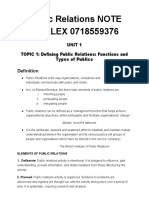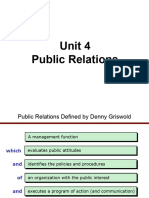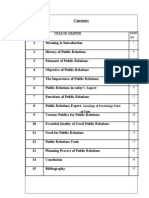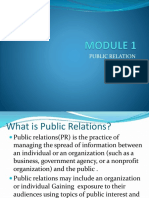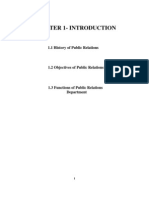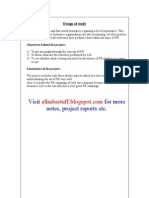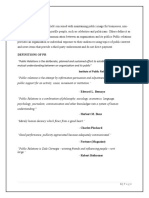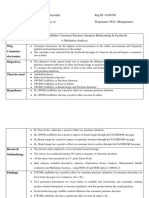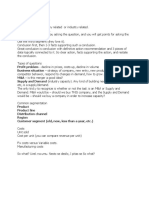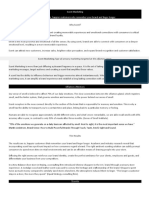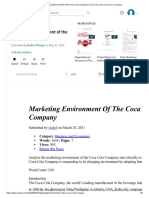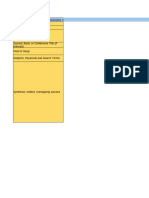0% found this document useful (0 votes)
39 views13 pagesDefine PR
The document outlines the fundamentals of public relations (PR), including its definition, evolution, objectives, and functions. It emphasizes the importance of PR in building relationships with various publics and maintaining a positive brand image through strategic communication. Additionally, it discusses the significance of understanding different types of publics and the role of ethics in PR practices.
Uploaded by
Sanya NagpalCopyright
© © All Rights Reserved
We take content rights seriously. If you suspect this is your content, claim it here.
Available Formats
Download as PPTX, PDF, TXT or read online on Scribd
0% found this document useful (0 votes)
39 views13 pagesDefine PR
The document outlines the fundamentals of public relations (PR), including its definition, evolution, objectives, and functions. It emphasizes the importance of PR in building relationships with various publics and maintaining a positive brand image through strategic communication. Additionally, it discusses the significance of understanding different types of publics and the role of ethics in PR practices.
Uploaded by
Sanya NagpalCopyright
© © All Rights Reserved
We take content rights seriously. If you suspect this is your content, claim it here.
Available Formats
Download as PPTX, PDF, TXT or read online on Scribd
/ 13









